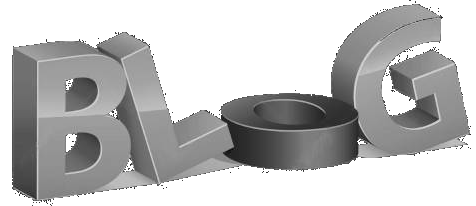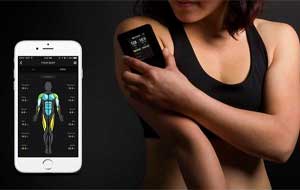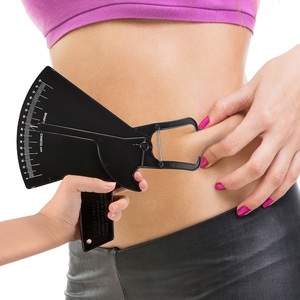A reliable source on many subjects.

A reliable source on many subjects.

![]()
 Sometimes it’s frustrating to get on the scale and see no change despite your best efforts. And while it’s natural to want to see the first concrete signs of progress, the truth is that body weight shouldn’t be the main objective. Instead, you should be concerned with your body fat percentage.
Sometimes it’s frustrating to get on the scale and see no change despite your best efforts. And while it’s natural to want to see the first concrete signs of progress, the truth is that body weight shouldn’t be the main objective. Instead, you should be concerned with your body fat percentage.
It’s important to know that many “overweight” people are healthy, while others with a “normal weight” are not.
Why is this?
Because it’s the percentage of body fat that determines whether you’re really overweight or not. More precisely, this measurement indicates your total body weight based on your body fat percentage and lean muscle mass percentage.
So here are the 10 best ways to measure your body fat percentage.
 Skinfold measurements have been used to estimate body fat for over 50 years [1].
Skinfold measurements have been used to estimate body fat for over 50 years [1].
Skinfold calipers measure the thickness of your subcutaneous fat – i.e. the fat under the skin – at certain points on the body.
Measurements are taken at 3 or 7 – sometimes 12 – different areas of the body.
These measurement zones are different for both sexes.
In the so-called 3-zone measurement, the parts measured in women are the triceps, the area above the hip bone and the thigh or abdomen.
For men, they are the chest, abdomen and thigh, or the chest, triceps and area below the shoulder blade.
For a 7-zone measurement, for both sexes, the chest, the area near the armpit and the area under the shoulder blade are also measured.
Skinfold calipers are a very affordable way of measuring body fat percentage, and measurements can be taken quickly.
These calipers can be used anywhere, at home or away.
This method requires practice and a basic knowledge of anatomy.
In addition, some people experience discomfort when pinched.
Stirrups are affordable and easy to buy online.
The skill of the person measuring skinfolds is a very decisive factor, as it will have a direct impact on accuracy.
Measurement errors can range from 3.5 to 5% body fat.
Body shape varies from person to person, and this variation in contours can give you an initial idea of your body fat percentage. [2].
Measuring the circumference of certain parts of the body is one of the simplest methods of estimating body fat.
The US Army, for example, uses a body fat calculation that simply requires age, height and some circumference measurements of certain body parts.
For men, this method involves measuring neck and waist circumferences.
For women, hip circumference is also included.
This method is easy and affordable.
A flexible tape measure and a calculator are all you need. These tools can be used at home or elsewhere.
Body circumference equations may not be accurate for all people due to differences in body shape, but especially according to the distribution of fat in the body.
A flexible measuring tape is readily available and very affordable.
Accuracy can vary considerably depending on how similar you are to the people used to develop the equations that serve as standards.
The error rate can be as low as 2.5 – 4.5% body fat, but it can also be much higher than this.
As the name suggests, DXA uses X-rays of two different energies to estimate your body fat percentage [3].
During a DXA scan, you lie on your back for about 10 minutes while an X-ray scans you.
The amount of radiation from a DXA scan is very small. It corresponds to about the same amount you receive during three hours of your normal life. [4].
DXA is also used to assess bone density, providing detailed information on bone, lean body mass and fat in separate areas of the body (arms, legs and torso). [5].
This method provides accurate, detailed information, including fat distribution in different body regions and bone density.
DXA is often inaccessible to the general public and is expensive.
A DXA is generally only available in medical or research centers.
DXA provides more consistent results than other methods. The error rate varies from 2.5 to 3.5% of body fat.
This method, also known as underwater weighing or hydrodensitometry, estimates body composition based on density. [6].
This technique weighs you while submerged underwater after exhaling as much air as possible from your lungs.
You will also be weighed while on land, and the amount of air remaining in your lungs after exhalation will be estimated or measured.
All this information will be interpreted according to formulas to determine your body’s density.
This same density will then be used to determine your body fat percentage.
Accurate and relatively fast.
This method is not for everyone. Some people cannot tolerate being completely submerged underwater.
The method requires you to exhale as much air as possible, then hold your breath underwater.
Hydrostatic weighing is generally only available at universities, medical establishments or certain fitness centers.
When tests are carried out perfectly, the error of this device can be as low as 2% body fat.
Like hydrostatic weighing, air displacement plethysmography (ADP) estimates body fat percentage based on your body’s density. [6].
However, ADP uses air instead of water.
The relationship between air volume and pressure enables this device to determine your body’s density [7].
All you have to do is sit inside an egg-shaped chamber for several minutes while the air pressure inside the chamber is altered.
For accurate measurements, you’ll need to wear tight-fitting clothing, preferably a swimsuit.
The method is accurate and relatively fast, and does not require immersion in water.
ADP has limited availability and can be expensive.
ADP is generally only available from universities, medical establishments or certain fitness centers.
Accuracy is very good, with an error rate of 2 – 4% body fat.
BIA devices detect how your body reacts to small electrical currents via electrodes placed on your skin.
These electrodes send currents into your body, while others receive the signal after passing through your body’s tissues.
Electric currents move more easily through muscle than fat, due to the higher water content of muscle [8].
The BIA device automatically analyzes your body’s response to electrical currents and thus determines your body composition.
A variety of BIA devices are available, differing in cost, complexity and accuracy.
BIA is quick and easy, and many devices are available for purchase by consumers.
Accuracy varies considerably and can be greatly affected by food and liquid consumption.
Although many units are available to the general public, they are often less accurate than the expensive devices used in medical or research centers.
Accuracy varies, with an error rate of between 3.8 and 5% of body fat, but may be higher or lower depending on the device used. [9].
BIS is similar to BIA in that both methods measure the body’s response to small electrical currents.
Although similar in principle, BIS and BIA devices use different technology.
BIS uses a larger number of electrical currents than BIA, in addition to high and low frequencies, to mathematically predict the amount of body fluid. [10].
BIS also analyzes information differently, and some researchers believe it to be more accurate than BIA [10, 11].
However, although it looks similar to the BIA, the BIS uses the body fluid information it gathers to determine your body composition based on equations [11].
The accuracy of both methods depends on similarity to the people for whom the equations were developed [8].
BIS is quick and easy.
Unlike BIA, consumer BIS devices are not currently available.
BIS is generally only available from universities, medical establishments or fitness centers.
BIS is more accurate than consumer BIA devices, but has an error rate similar to that of more advanced BIA models (3 to 5% fat). [12].
Electrical impedance myography is a third method that measures your body’s response to small electrical currents.
Whereas BIA and BIS send currents throughout your body, EIM sends currents through smaller, more limited areas [13].
Recently, this technology has been used in inexpensive devices that are available to the general public.
These devices are placed on different parts of the body to estimate the percentage of body fat in those specific areas [13].
Because this device is placed directly on specific areas of the body, it has some similarities with Skinfold calipers, although the technologies are very different.
EIM is relatively quick and easy.
Very little information is available on the accuracy of these devices.
Inexpensive devices are available to the general public.
Limited information is available, although one study reported an error rate of 2.5% to 3% compared with DXA. [13].
3D body scanners use infrared sensors to provide a detailed view of your body’s shape. [14].
The sensors generate a 3D model of your body.
For some devices, you stand on a rotating platform for several minutes while the sensors detect your body shape.
Other devices use sensors that rotate around your body.
The scanner then estimates your body fat percentage based on your body shape. [15].
Basically, 3D body scanners are similar to circumference measurements. However, they provide a greater amount of information [16].
A 3D body scan is relatively quick and easy.
3D body scanners are not generally available, but are gaining in popularity.
Several consumer devices are available, but they are not as affordable as simple circumference measurement methods such as pleated calipers.
Limited information is available, but some 3D scanners can be quite accurate, with an error rate of around 4% body fat. [14].
Multi-compartment models are considered the most accurate method of assessing body composition.
These models divide the body into three or more parts. The most common assessments are called 3-compartment and 4-compartment models.
These models require multiple tests to obtain estimates of body mass, body volume, body water and bone content. [17].
This information is obtained from some of the methods already described in this article.
For example, hydrostatic weighing or ADP can provide body volume, BIS or BIA can provide body water and DXA can measure bone content.
The information from each of these methods is combined to build a more complete picture of the body and obtain the most accurate body fat percentage [17, 18].
This is the most accurate method available.
It is often unavailable to the general public and requires several different assessments.
More complex than most other methods.
Multi-compartment modeling is generally only available in certain medical and research centers.
This is the best method in terms of accuracy. Error rates can be as low as 1% body fat.
Deciding which body fat percentage method is best for you isn’t easy. Here are some questions to help you decide:
Some methods, such as skinfold measurements, circumference calculations and portable BIA devices, are inexpensive and allow you to obtain measurements without leaving the comfort of your home as often as you like.
The devices can also be easily purchased online.
Even if these methods don’t offer greater accuracy, they may be the best choice for you.
Most of the methods with the highest accuracies are not available for use in your own home.
What’s more, when they are available from a specialist center, for example, they are – if anything – expensive.
If you want a more accurate assessment and are prepared to pay for it, you could choose a method with good precision such as hydrostatic weighing, ADP or DXA.
Whatever method you choose to use, it’s important to always use the same method.
For almost all methods, it’s best to take your measurements in the morning when you’re fasting, after you’ve washed up.
Ideally, you should do the test before drinking, especially for methods that use electrical signals such as BIA, BIS and EIM.
By testing yourself in the same way every time, your way of measuring will improve and your error rate will reduce.
However, whatever method you use, you should always interpret your results with caution.
Even the best methods aren’t perfect and will only give you a relative estimate of your true body fat percentage.